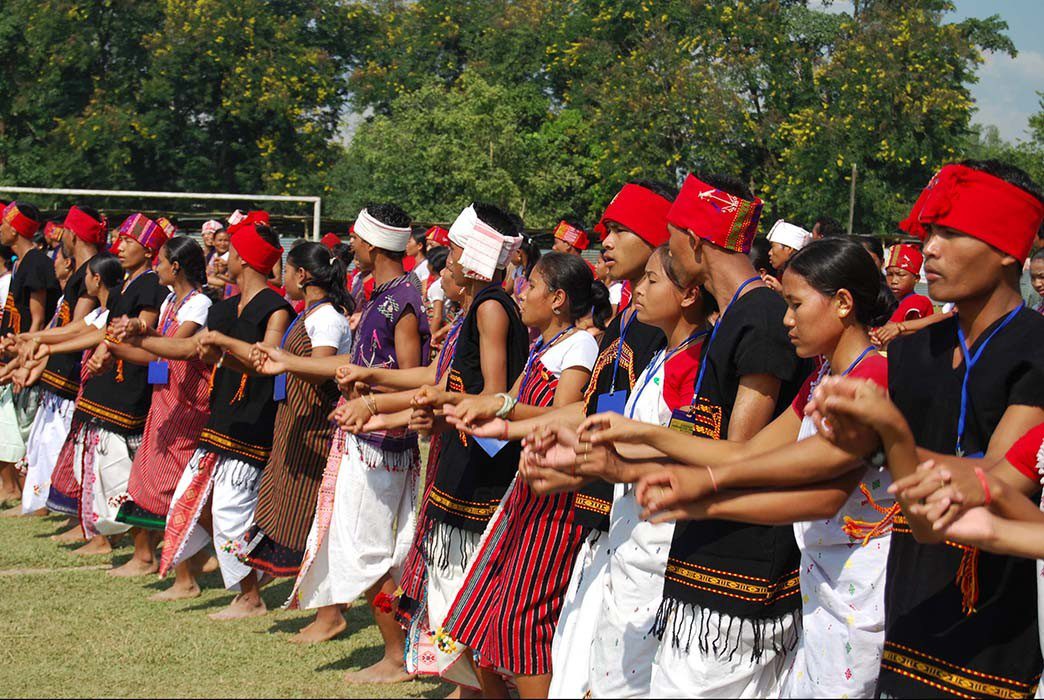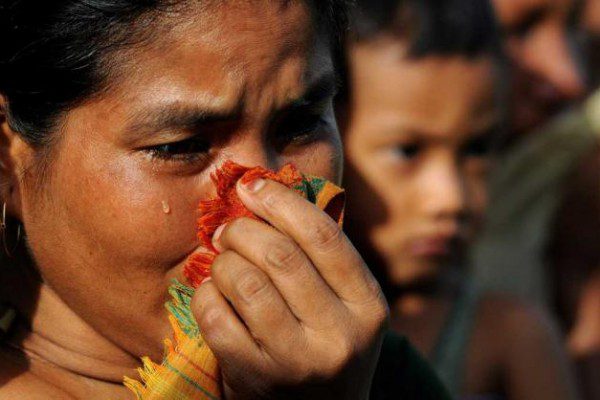Language is a powerful tool for indigenous people to overcome injuries of imposed change, political exclusion and loss of identity.
The marginality of indigenous languages has been a defining trope that contests universalist assumptions of literary traditions, and also factors in the unique ethnic and cultural experiences which demand critical evaluation. Language has been a powerful tool for indigenous people across the world in order to overcome the injuries of imposed change, political exclusion and loss of identity. Within the constraints of state legal systems and the plethora of public ideas and expectations, indigenous people have been involved in seeking cultural justice, while rearticulating and redignifying the collective self. From the perspective of India’s Northeast, “The common man in the Northeast is painfully caught in the mayhem of violence produced by unending militancy, inter-ethnic feuds and the oppressive measures of the state.”[1] Karbi Anglong in Assam has been part of such a history since the 1950s.
When the first State Reorganisation Commission was formed in 1953, it did not recommend statehood for the tribal districts in Northeast India. Consequently, the “Hill State Movement” intensified its demands and by the time of the elections in 1957, all of the six Autonomous District Councils of Assam were under pressure to form independent Hill States. However, ruling Karbi leaders were in opposition to the formation of Hill States. In reaction, the Karbi Students’ Association (KSA) was formed in 1959—the first of its kind. Meanwhile, the Diphu Government Boys’ High School was established in 1958 and the first and only government-run college, Diphu Government College was founded in 1964. Discussions on language rights, cultural activism centred around these urban locations in and around Diphu in East Karbi Anglong.
The Assam Official Language Act of 1960 led to widespread agitation, and the KSA became active participants of the newly formed All Party Hill Leaders’ Conference (APHLC). They propagated the cause of the APHLC and also advocated the use of the Roman script for Karbi language amidst staunch opposition of ruling Karbi leaders, who were then part of the Mikir Hills Autonomous District Council.
From the perspective of India’s Northeast, “The common man in the Northeast is painfully caught in the mayhem of violence produced by unending militancy, inter-ethnic feuds and the oppressive measures of the state.”
The autonomous state of Meghalaya was created in 1970 as per Article 244A of the Constitution and the Assam Reorganisation (Meghalaya) Act of 1969. Karbis were given the opportunity to join the state of Meghalaya, to have a new autonomous state of their own, or to continue to remain in Assam. The ruling Karbi leaders opted to be part of Assam, which was seen as a betrayal of the Karbi people by the KSA, which then continued the statehood campaign from time to time.
In 1973, the Roman Script movement resurfaced and the KSA demonstrated in Diphu in December of the same year. They were subjected to brutal assault by the state police and many KSA leaders were arrested and jailed. Inside prison, the idea of the Karbi Youth Festival (KYF) was developed in order to create cultural awareness and protect and promote dying traditions from Karbi Anglong. The KYF was first held in Karbi Club, Diphu in January 1974, coinciding with New Year celebrations. It was a small affair lasting for three days and drew only a limited attendance. But it made a huge impact among the youth and students.
Since then, the organisers have made the KYF an annual event, held in rural areas all over Karbi Anglong. An apex cultural body called the Karbi Cultural Society (KCS) was formed in 1977, which directly started supervising the KYF. The KYF grew in strength and prestige as rural youth and students rallied solidly behind it despite the state government’s apathy and refusal to provide any financial assistance and made it the national cultural platform of the Karbi people. In the cartographic imaginary, Karbi Anglong, as reiterated by the annual Karbi Youth Festival, has existed and survived over centuries through its myths, legends, songs, dances, artistic traditions as well as through its conflicting history and moribund politics. Most importantly, the Karbi Youth Festival takes cognisance of differentiation rather than assimilation, whereby language plays a mobilising force in identity formation.
In the cartographic imaginary, Karbi Anglong, as reiterated by the annual Karbi Youth Festival, has existed and survived over centuries through its myths, legends, songs, dances, artistic traditions as well as through its conflicting history and moribund politics.
In 1994, KYF began a new experiment when it was decided to hold a five day event at Taralangso, a sprawling serene venue in Diphu, with an aim to build a cultural complex called the Karbi Peoples’ Hall (KPH). Since then, the KPH continues to be the venue of annual KYF. The KYF draws more than 2,000 young rural artists, folk singers, and dancers in their colourful traditional dresses. They perform folk dances such as Chomkan, Chong-kedam, Banjar (related to death ritual), Lingpum-Sokchon, Haccha and Ritnong-Chingdi (farming related), in accompaniment with traditional drum (cheng) and related folk songs. Participants come from 21 zonal committees of the KCS, each zone organising its own fund for 100 members or more and taking part in the competitions for folk and modern singing, folk and modern dancing, dress-shows, and traditional sports, which draw a crowd of thousands.
Taralangso has developed an ethnic amphitheatre and huge three open-air stages where hundreds of dancers or singers can perform at a time. Besides, there are western song competitions drawing in new talents who are experimenting with new age fusion music with themes of youth frustration, unity, change and assertion of identity. The five-day event is almost trouble-free without the presence of the police, as it is manned by hundreds of KCS volunteers.
The festival begins with a traditional procession called Rongketong or the “Hundred Drum Ensemble”, presented by artistes of the Department of Art and Culture in the Karbi Anglong Autonomous Council (KAAC). Dances as varied as Ritnong Chingdi/Hen’up Ahi Kekan, Lingpum Sokchon, Nimso Kerung, Hacha Kekan, Chong Kedam and Banjar Kekan are performed by young men and women from the 26 KCS zones along with other invited groups across the region. Karbi creation songs such as ‘Mosera Khir’ or the ‘Bong’oi’ as well contemporary Karbi songs and dances such as ‘Luncheto’ and ‘Lunchethak’ are part of the repertoire at KYF. Traditional musical instruments such as Muri Tongpo, Krongchui, Kum Li’eng reiterate the virtuosity and skills from the region, as do the active participation in traditional sports such as Hambi Kepathu, Kengdongdang Kekat, Bathili Ke’ap.
In the course of the events at the Karbi Youth Festival, the community redefines itself in the light of the emergence of a new discourse of Karbi identity and ethnic presence in the hills. The festival is a site of resistance, celebration and reaffirmation of Karbi cultural heritage.
In the course of the events at the Karbi Youth Festival, the community redefines itself in the light of the emergence of a new discourse of Karbi identity and ethnic presence in the hills. The festival is a site of resistance, celebration and reaffirmation of Karbi cultural heritage. Lamenting on the gradual transformation of the Karbi ‘rong’ or village to a Kuwehonchi (Guwahati) or concrete junge, the Festival narrates a tale of exclusion, inclusion, and of survival amidst all adversities. The Karbi Youth Festival blog gives a clarion call to all with the following lines:
“Today, the land that we call ours is encroached upon and there are more strangers than kinsmen where have they all gone?? We are still looking for them, in the hills and plains and valleys!!”
[1] Baral, Kailash C. “Articulating Marginality: Emerging Literatures from Northeast India” in Margaret Ch. Zama edited Emerging Literatures from Northeast India: The Dynamics of Culture, Society and Identity (SAGE Publications India Pvt. Ltd, New Delhi: 2013), 10














